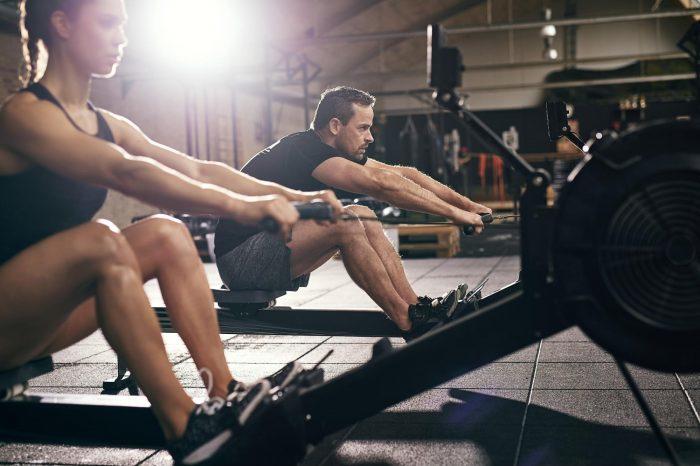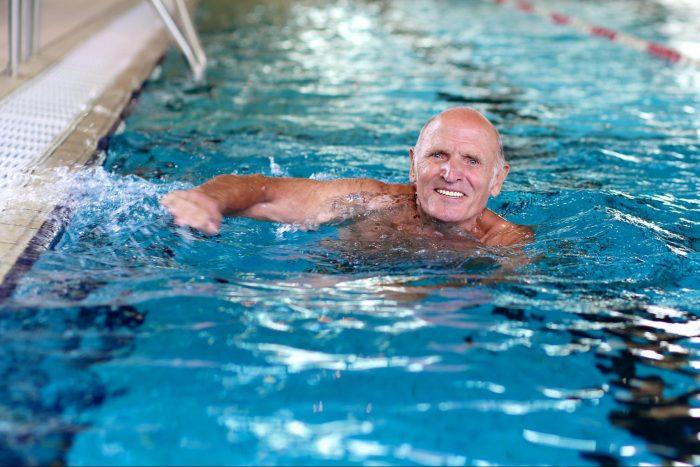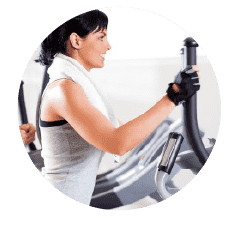What Is A Low Impact Workout And Do I Need One?
You heard it in junior high gym class. You hear it from your doctor. You even see it scrolling through social media: Exercise is important for your mood, well-being, and overall health. But it’s not all black and white. Exercise can look different for every individual, based on factors like age, health condition, medical history, and schedule. What really matters is moving your body a little bit every day.
Using data from the National Health and Nutrition Examination Survey (NHANES), a 2018 study published in the Journal of the American Medical Association found that a quarter of Americans spend way too much time sitting down: More than eight hours per day for many. Another 2018 American Cancer Society study published in the American Journal of Epidemiology reported a strong connection between sitting for long periods of time and a higher risk of death from cancer, heart disease, stroke, diabetes, Alzheimer’s disease, nervous disorders, and more.
But don’t worry. You don’t have to go from sitting on the couch or at your desk to participating in a triathlon to get a quality workout in. Low-impact workouts are a great option for anyone who wants to ease their way into a consistent exercise routine, switch up their current workout schedule, or give their body a break from more intense training and cardio.
What is a low-impact workout?
Different types of exercise are associated with varying levels of intensity. Understanding the difference between each level can help you choose the best workout for your physical condition and overall fitness goals.
Low-impact workout
Low-impact exercise is any movement that requires taking at least one foot off the ground but involves minimal direct force on the body. Low-impact workouts are a gentler form of cardio, perfect for getting a sweat in without putting undue stress on your muscles and joints. Think elliptical workouts, yoga, and swimming.
High-impact workout
When you think of major contact sports like football, hockey, and rugby, you’re visualizing high-impact exercise. High-impact workouts can also include activities like running and gymnastics. These types of workouts require a much higher level of intensity and can cause major wear and tear on the body over time if proper recovery time is not incorporated. Repeated direct force and excessive stress on muscles, joints, and ligaments can lead to considerable injuries. That’s why athletes often incorporate lower-impact workouts into their schedules to give their body a chance to recover.
What factors should determine the best workout for you?
Age
Never let your age define what you can achieve. That goes for your workout schedule, too. Low-impact exercise doesn’t have to mean boring or repetitive. There are tons of exciting indoor and outdoor exercise options that don’t put overbearing pressure on your body. We’ll touch on some of these options later in the article.
Fitness goals
Before starting a new fitness journey, really think about your overall fitness goals. Whether you simply want to integrate some movement into your schedule, are trying to lose a few pounds, or want to maintain a healthy weight, low-impact exercise can be right for you. If you’re more of an adrenaline junkie or want to join a team sport, higher-impact workouts might be the right move. Incorporating both intensity levels will give you a well-rounded exercise routine.
Overall health
Are you recovering from an injury or suffer from a health condition that’s been keeping you on the sidelines? Look into low-impact workouts. Lower-impact exercise will enable you to get moving again without the risk of exacerbating your injury or condition.
Ideas for low-impact workouts
Having a variety of workout ideas on hand can spice up your exercise routine and keep you moving. Try out one of these ideas the next time you’re looking for an enjoyable, low-impact workout.
- Swimming: Take your routine to the swimming pool for a workout that is equal parts resistance-based and low impact. The water provides resistance for your muscles without putting stress on your joints. Your upper and lower body work to propel you forward, leaving you with a full-body workout. Start with 15 minutes of laps and aim to work up to two and a half hours of swimming per week.
- Elliptical: Using an elliptical machine makes for an incredible full-body, low-impact workout. Ellipticals provide a similar gliding effect to swimming (without having to change into a bathing suit and swim cap). Elliptical workouts are ideal for anyone wary of joint stress since your feet remain stationary while gliding on the two platform ramps. Many ellipticals come with adjustable ramps so you can customize the intensity of the workout to your liking at home or in the gym. Thirty minutes of steady cardio will leave your heart in great shape. Throw in some interval training to add even more calorie-burning and aerobic benefits.
- Barre: You don’t have to be a dancer to get a stellar workout during a barre class. Barre classes combine elements of ballet, yoga, and Pilates for an hour of intensive micro-movements and flexibility challenges. Equipment like resistance bands, hand weights, and exercise balls are often incorporated for strength training exercises.
- Circuit training: Circuit training occurs when you perform a series of low-impact moves multiple times to complete a circuit. Circuit training is a smart option for combining cardio moves with dumbbells, kettlebells, or barbells to burn fat and tone your muscles. For a simple but effective workout, choose one upper-body exercise, one lower-body exercise, one compound exercise, and a cardio movement like jumping rope and alternate between each move every 45 seconds. Complete a few rounds of the circuit to get your blood pumping. There are also lots of other workouts available online.
- Yoga: Yoga has entered the mainstream in recent years, recognized for its ability to improve flexibility and strength. Several yoga studios offer free trials and beginner classes so you can get a feel for the practice without the intimidation factor. You can also find yoga classes on YouTube so you can do some low-impact exercises from the comfort of your home.
- Hiking: Hiking is an amazing exercise for people of all ages. Bring a friend along for an added social bonus while enjoying some fresh air and movement. Check out the AllTrails app to find a beginner’s hike in your area. You can filter trails based on intensity level, pet-friendliness, and surrounding landmarks like bodies of water, wildflowers, and foothills.
- Rowing: An indoor rowing machine mimics the actions of rowing a boat. Rowing might sound like a solely upper-body workout, but it actually involves a full-body motion. As such, it’s important to watch the screen on your rowing machine to monitor your activity level. This is easiest by tracking your stroke rate, or “strokes per minute.” Keep the rate between 25 and 30 strokes per minute for a quality workout that isn’t too taxing on your body.
Low-impact workouts are the best exercise option for anyone in recovery mode, looking to improve alignment, or simply trying to give their body a break from intense cardio and training. Look into doing an elliptical workout, swimming laps, taking a hike, or signing up for a barre class the next time you’re craving high-energy, low-stress movement.





 Compact/Folding
Compact/Folding Front Drive
Front Drive Rear Drive
Rear Drive